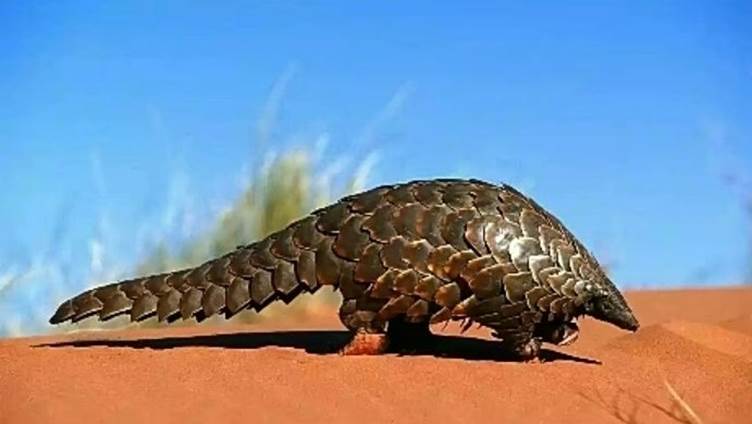PANGOLIN

Disclaimer: Copyright infringement not intended.
Context
- Based on recent studies on the Wuhan wet market in China, along with others carried out in Cambodia, Laos, Japan, China, and Thailand, posits that the COVID-19 virus in Rhinolophus bats went on from infecting wild and/or domestic animals to humans.
- Pangolins were first suspected as a link between animals and humans, but now Pangolin is appeared to have been collateral victims rather than links.
Findings of study
- A coronavirus genome sequence detected in pangolins was indeed related to that of SARS-CoV-2, but the rest of the genome was too distant from it genetically.
- The pangolin hosts in which the viruses that were genetically close to SARS-CoV-2 were found had mostly been confiscated at live-animal markets, at the end of the supply chain.
- As a result, they had been in lengthy contact with other animal species.
- They were likely infected along this supply chain rather than in their natural environment, thus they were suspected of being an intermediate host.
- The pangolins and rhinolophus bats do not share the same habitat, making it highly unlikely there was any contact between the two species in which the virus jumped from one to the other.
- On the other hand, civets and raccoon dogs could be an intermediate source of SARS-CoV-2.
- Rodents or primates could also carry pathogens with zoonotic potentials, such as hantaviruses – which can cause haemorrhagic fever with the renal syndrome – or filoviruses, which include the Ebola virus.
- The latter is passed on to humans through wild animals, in particular bats, antelopes, and primates such as chimpanzees and gorillas, than spread among humans, mainly by direct contact with blood, secretions and other bodily fluids from infected people. The average case fatality rate is around 50%.
About Pangolin
- Pangolins, despite being listed in Schedule I of Wildlife (Protection) Act, 1972 continue to be the world’s most trafficked mammal.
- The Indian pangolin is the largest among eight pangolin species.
- The nocturnal animal lives in burrows and feeds on ants and termites.
- It practices Volvation is a defensive behaviour in certain animals, in which the animal rolls its own body into a ball, presenting only the hardest parts of its integument, or its spines to predators.
- Both Indian Pangolin (Manis crassicaudata) and the Chinese Pangolin (Manis pentadactyla) are found in India.
- Indian Pangolin is a large anteater covered by 11-13 rows of scales on the back.
- A terminal scale is also present on the lower side of the tail of the Indian Pangolin, which is absent in the Chinese Pangolin.
https://epaper.thehindu.com/Home/ShareArticle?OrgId=GVT9RCKTV.1&imageview=0
Telegram channel link - https://t.me/+



1.png)
